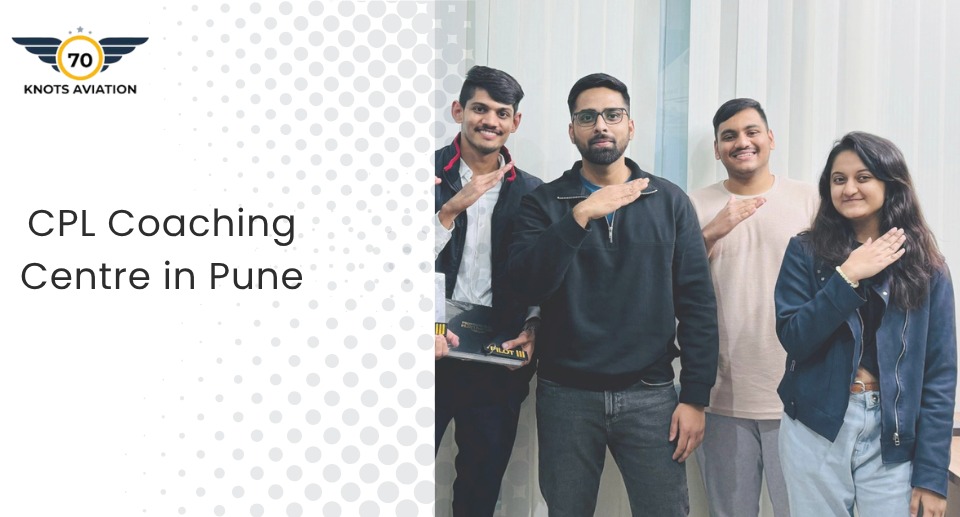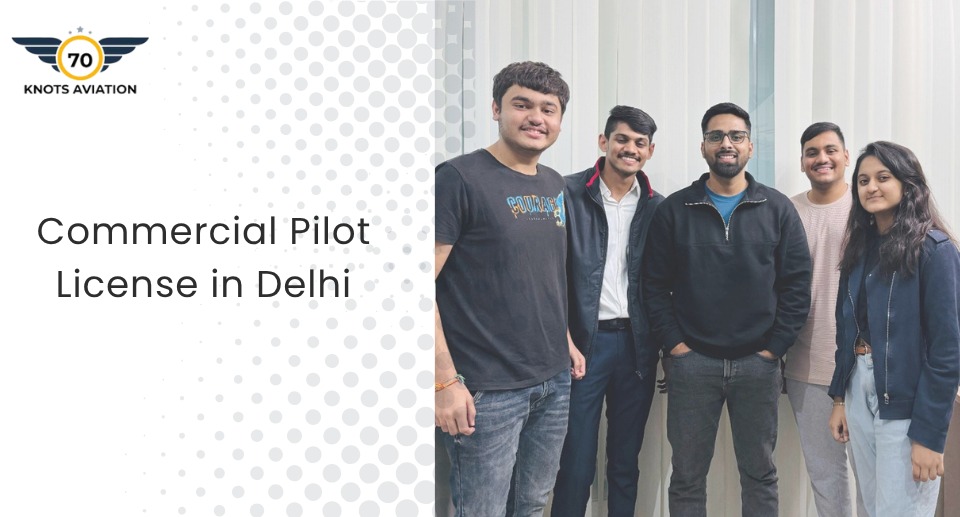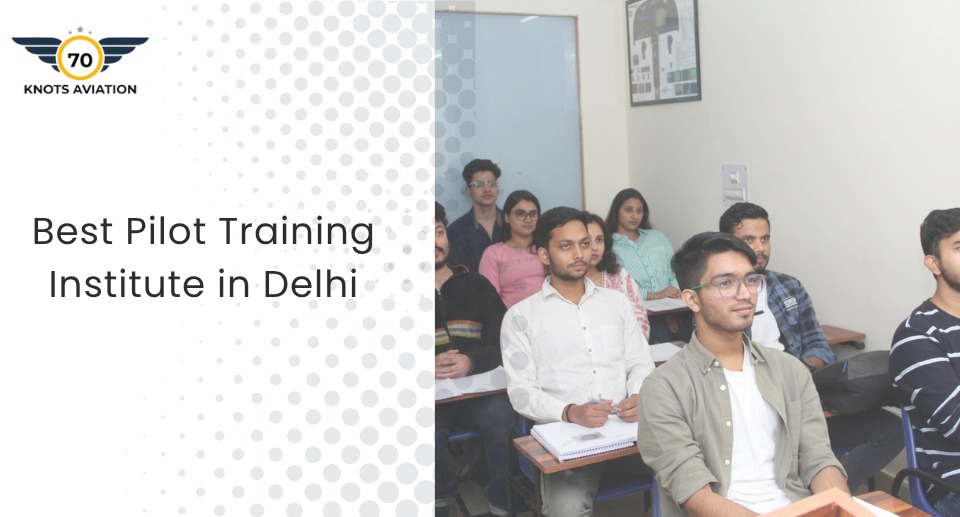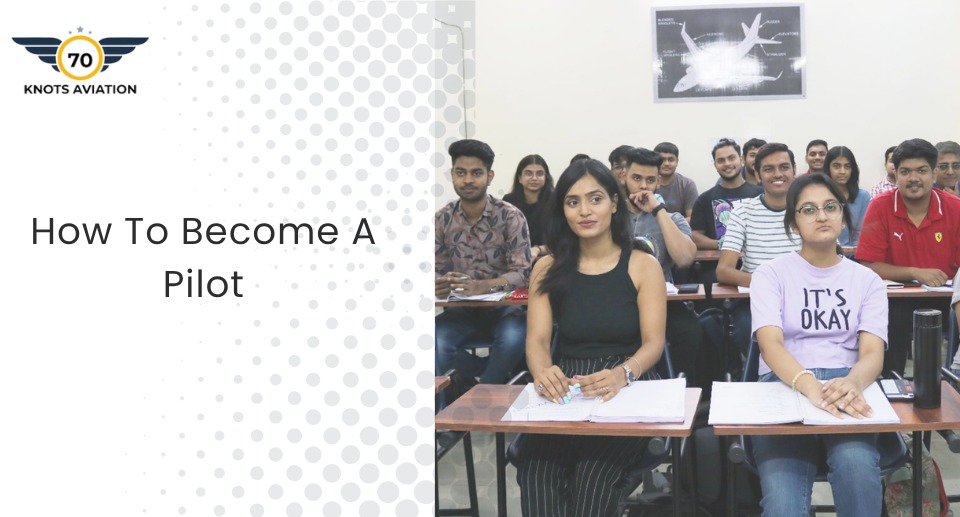How to Become a Pilot: Step-by-Step Guide

Becoming a pilot is a dream most people have, but it takes dedication, training, and commitment to get there. Whether the desire is to fly commercially, privately, or in the military, the goal needs to be accomplished in many informed steps. The path to becoming a pilot is as fun as it is challenging and full of experiences of learning, growth, and indelible experiences. This blog will explain how you can gain the upper hand in pursuing your dream, be it flying for a major airline, flying private charters, or simply exploring the world from a bird’s-eye view. At 70 Knots Aviation, we provide aspiring pilots with comprehensive training programs designed to equip them with the knowledge and hands-on experience necessary to succeed.
Your step-by-step Outline to be a Pilot
Following are the strides you need to make one after each to establish a successful aviation career.
Step 1: Understand the Role of a Pilot
An understanding of what becoming a pilot means is important before joining the profession. Pilot duties include ensuring and guaranteeing the safe operation of:
- Your aircraft
- Delivery of passengers and cargo to their desired destination
Not to mention that you need to be a good decision-maker, pay attention to detail, and remain calm under pressure. Also, one must update oneself with the changing aviation procedures, as well as weather and technological patterns. Above all, if one is really interested in aviation and enjoys challenges, this can, in fact, be a fulfilling career. So, do a little self-analysis test to check if this job is for you.
Step 2: Meet the Basic Requirements
When you begin, you need to pass these basic prerequisites:
Age and Educational Qualifications
There are specific age and education requirements to fulfill to become a pilot. Typically, in order to get a student pilot certificate, you often have to wait until you are 16 years old. For a private pilot license, you must wait until you are 17. For commercial flying, the requirement is that you must be 18 years old. An airline transport pilot must be 23 years old. Once more, a high school diploma or equivalent is usually the minimum for private or recreational flying. Airline pilots, however, are mostly required to have four years of education, particularly when it comes down to the major airlines.
Medical Fitness
Pilots should strive to clear DGCA Class 1 and Class 2 medical evaluations, which are medical evaluations specific to aviators and performed by a DGCA-approved medical examiner. The medical certificate required will depend upon the type of pilot license you will be pursuing:
- Class 1 medical certificate: Required for commercial pilots and airline transport pilots.
- Class 2 medical certificate: This is needed for private pilots or student pilots.
This medical evaluation mostly includes assessments of vision, hearing, cardiovascular wellness, and general physical and mental fitness.
Step 3: Choose the Right Flight Training Program
Choosing a good flight school is one of the best things you will ever do toward becoming a pilot. DGCA-approved flying schools provide flight training in India. It’s important to make sure that the flight school is recognized by the Directorate General of Civil Aviation (DGCA) before enrolling. The primary structures of training, are: Integrated Flight Training Programs & Modular Programs.
70 Knots Aviation has specialized flight training programs created for your future aviation careers. Our curriculum teaches everything from aerodynamics and aircraft systems to maneuvers, navigation, and emergency procedures with modern training aircraft, giving the students theoretical knowledge with hands-on training.
Step 4: Obtain a Student Pilot Certificate
First and foremost, a prospective solo pilot needs to obtain the Student Pilot License (SPL), which is issued by the DGCA. A medical certificate and passing the flying school’s entrance exam are then prerequisites for the application process. With this license, you can start receiving hands-on flight training under the close supervision of a certified flight instructor.
Step 5: Start Flight Training
You can start flight training as soon as you receive your student pilot certificate. Ground school and actual flying lessons make up flight training. Aerodynamics, meteorology, air traffic control protocols, and flight regulations are among the fundamental aviation subjects covered in the ground school. You will take flight lessons concurrently, learning how to navigate, operate, maneuver, and handle emergencies in an aircraft.
At 70 Knots Aviation, we make sure that students receive in-depth practical instruction so they can gain competence and confidence when operating aircraft.
Step 6: Written and Practical Exams
Two significant tests must be passed in order to obtain a Private Pilot License (PPL) or any other higher certification:
- The DGCA Written Examination covers aeronautical knowledge and necessitates extensive study.
- The Check Ride (Practical Flight Test) assesses your capacity to fly an aircraft effectively and safely in a variety of scenarios.
The check ride consists of a flight test and an oral examination conducted by a DGCA examiner.
Step 7: Build Flight Hours and Gain Experience
Once you earned your first pilot license (PPL), you can log flight hours toward the requirements for the next level of pilot licensure. You must log a minimum of 200 hours for your commercial pilot license (CPL), and the requirement is 1,500 hours for your airline transport pilot license (ATPL).
A commercial pilot might build his hours in the service of a flight school as a flight instructor, as a banner tow pilot flying a more aerial than cross-country profile, or flying for an operator under a corporate contract before the airlines. Others build hours flying as cross-country pilots in poorer weather and flying heavier types of aircraft to develop experience and gain hours before moving to the airlines.
Step 8: Acquire Advanced Ratings and Certifications
Pilots require additional certifications and ratings in order to operate more complicated aircraft and fly in various conditions:
- Rating of Instruments (IR): Instrument Rating (IR) pilots can fly using only the cockpit instruments in case of low visibility. This is especially important for commercial and airline pilots as they often fly in bad weather.
- Rating for Multiple Engines (MER): Flying aircraft with multiple engines requires a Multi-Engine Rating (MER). Since most commercial and airline jobs require multi-engine proficiency, it improves your skills and opens up more job opportunities.
We at 70 Knots Aviation make sure our students are ready for their aviation careers by providing structured training programs for both Instrument and Multi-Engine Ratings.
Step 9: Submit Pilot Job Applications
You can start applying for pilot jobs as soon as you have the required training and credentials. Typical employment opportunities include:
- Piloting for major or regional airlines is known as commercial airline flying.
- Piloting private or business aircraft is the responsibility of charter and corporate pilots.
- Cargo pilots move specific cargo for freight companies.
- A flight instructor builds more flight hours while instructing new pilots.
To enhance your chances of achieving a desired position, you can apply for airline cadets, attend aviation career fairs, and build networking opportunities. Furthermore, ongoing recurrent training and advanced certification will certainly always help with continued proficiency.
Conclusion
Being a pilot is a thrilling and fulfilling journey that calls for commitment, the right instruction, and consistent support. You can methodically advance from a student pilot to a professional aviator by following this detailed guide. Selecting a trustworthy flight school is essential to guaranteeing high-quality instruction and flight time. To assist you in reaching your aviation objectives, 70 Knots Aviation offers training programs that are among the best in the industry. Take the first step towards soaring through the skies by beginning your journey right now!






